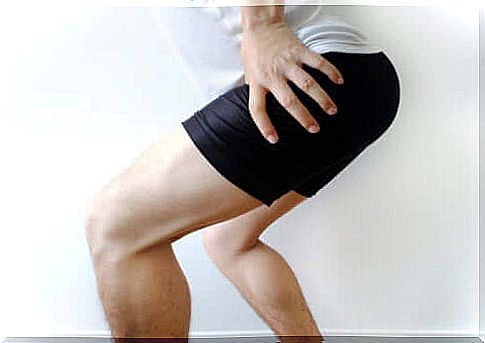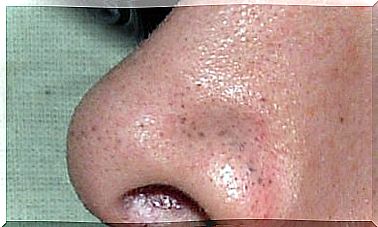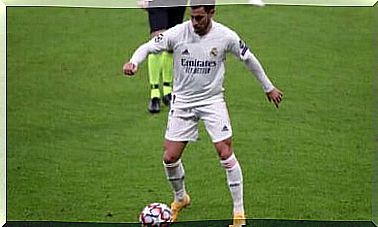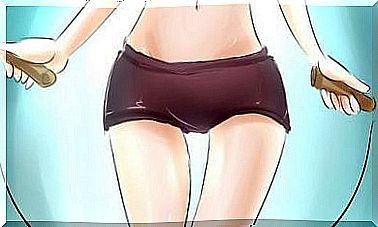Injury Of The Acetabulum: Causes, Symptoms And Treatment

Hip acetabular injury is a fairly common disease, especially among athletes. For example, in footballers, hockey players and also ballet dancers.
The acetabular failure actually involves a part known as the acetabulum. It is a cartilage ring between the thigh bone and the hip. It covers the outer edge of the given joint cavity. In this way, the acetabulum of the hip joint helps to hold the longest bone in the body in position.
Not only is this injury quite common, it is usually quite serious, often requiring surgery. That’s why in this article we explain everything that acetabular injury is associated with and how to avoid it.
What is the acetabular injury?
Before explaining what a labrum damage to the hip joint is, it’s worth taking a closer look at what this joint looks like. The hip is a spherical joint. The acetabulum, on the other hand, is a cavity in the hip bone that fits the top of the femur.
The ball-shaped part is called the femoral head. At the edge of the acetabular cavity there is a ring of cartilage tissue, i.e. the labrum. As an article in Sports Medicine Oregon points out , this structure increases joint stability.
When the labrum of the hip joint is damaged, it is essentially damage to the cartilage. As a result, the acetabulum no longer fulfills its function properly. One consequence is the loss of some support for the femoral head.
There are many causes that can lead to this problem, both acute and chronic. For example, it could be the result of a femoral acetabular conflict or osteoarthritis. As we mentioned, this damage is more common in athletes.

Related symptoms
A damage to the labrum of the acetabulum is sometimes asymptomatic. However, as specialists from the Mayo Clinic point out, symptoms often appear. For example, the characteristic pain in the hip that spreads to the groin.
This pain worsens when the person walks or spends a lot of time sitting or standing. In addition, some patients experience stiffness in the hip joint as if the range of motion is restricted.
The joint may also crunch with certain leg movements or appear blocked. The problem is that untreated trauma can lead to complications. Over time, the possibility of developing osteoarthritis also increases.
Injury to the acetabulum – causes
As we pointed out earlier in this article, damage to the acetabulum is more common in athletes. The truth is, there are many reasons that can lead to this pathology.
Why is this damage more common in some sports? This is because certain physical activities may predispose you to over-repetition of certain movements of the hip joint. These movements can slowly and gradually damage the joint.
Risk factors relate to sports such as golf and ice hockey. Contact sports also often damage the labrum. For example, American football.
According to an article published in Hosiptal for Special Surgery , some anatomical abnormalities can also lead to this injury. The diseases associated with this damage are osteoarthritis and femoral acetabular conflict.
The latter problem is the abnormal contact between the femoral head and the acetabulum. It may be related to both the defect of the femur and the acetabulum. The point is that this contact causes the labrum to wear faster.
How is acetabular injury diagnosed?
Diagnosing hip damage may not be straightforward. It is imperative that the doctor performs the correct examination of the joint. To do this, he has to put his leg in motion and move it in various positions.
However, some follow-up tests are usually performed to rule out other changes. Radiography is one of the most frequently used in this case. Using the image, you can see if there are any fractures or abnormalities in the bone structure. This is especially useful if you have had an injury.
But the soft tissues of the body cannot be seen on an X-ray. For this reason, magnetic resonance imaging is also sometimes used.
Treatment of acetabular injury
A damage to the labrum is an injury that is quite difficult to heal. Although , for minor damage, drug or physiotherapy treatment may be effective, surgery to correct the problem cannot be ruled out.
However, there are measures that the doctor usually recommends in all cases, regardless of whether the patient goes to the operating room or not. One of them is weight loss when you are obese. This is to reduce the load on the hip joint.
For athletes, chances are your doctor will advise you to change some of your physical activity habits. In many cases, it is advisable to reduce the intensity or look for other forms of training.
Non-surgical therapies
Treatment is aimed at relieving the pain and reducing the inflammation that occurs with this injury. For this purpose, non-steroidal anti-inflammatory drugs are usually prescribed. For example ibuprofen or naproxen. Some people, on the other hand, may benefit from corticosteroid injections.
Another mainstay of treatment is physiotherapy. It should be carried out under the supervision of a specialist. It’s about doing exercises that help your joint regain range of motion.
Physiotherapy also aims to increase the strength and stretch of the muscles and joints so that the hips gain better stability during physical activity.

Surgical treatment
Surgery is often one of the best treatment options for severe labrum damage. It is also performed when non-surgical treatment has failed. That is, when, despite medications and physiotherapy, pain cannot be controlled and mobility cannot be restored.
According to a publication in the Cleveland Clinic , surgery to damage the labrum of the hip is performed using arthroscopy. It is a minimally invasive technique that takes place through small incisions. Through them, the instruments necessary to repair the injury are introduced.
Arthroscopy is performed on an outpatient basis. Most patients can go home the same day. The procedure consists in stitching the damage or reconstructing the entire labrum. A healthy cartilage transplant is necessary for reconstruction.
Despite the fact that the procedure is performed using a minimally invasive technique, it is also associated with certain risks. Bleeding, infection, or nerve damage may occur.
Can I prevent damage to the acetabulum?
Recovery from damage to the labrum of the acetabulum is not easy. The time needed for rehabilitation varies depending on the severity of the injury. Importantly, despite the surgery, crutches are likely to be needed for walking in the following weeks.
In fact, some patients only fully recover after a few months. Therefore, it is important to try to prevent this injury. For this purpose, it is recommended to perform strength exercises as well as to increase the flexibility of legs and hips.









